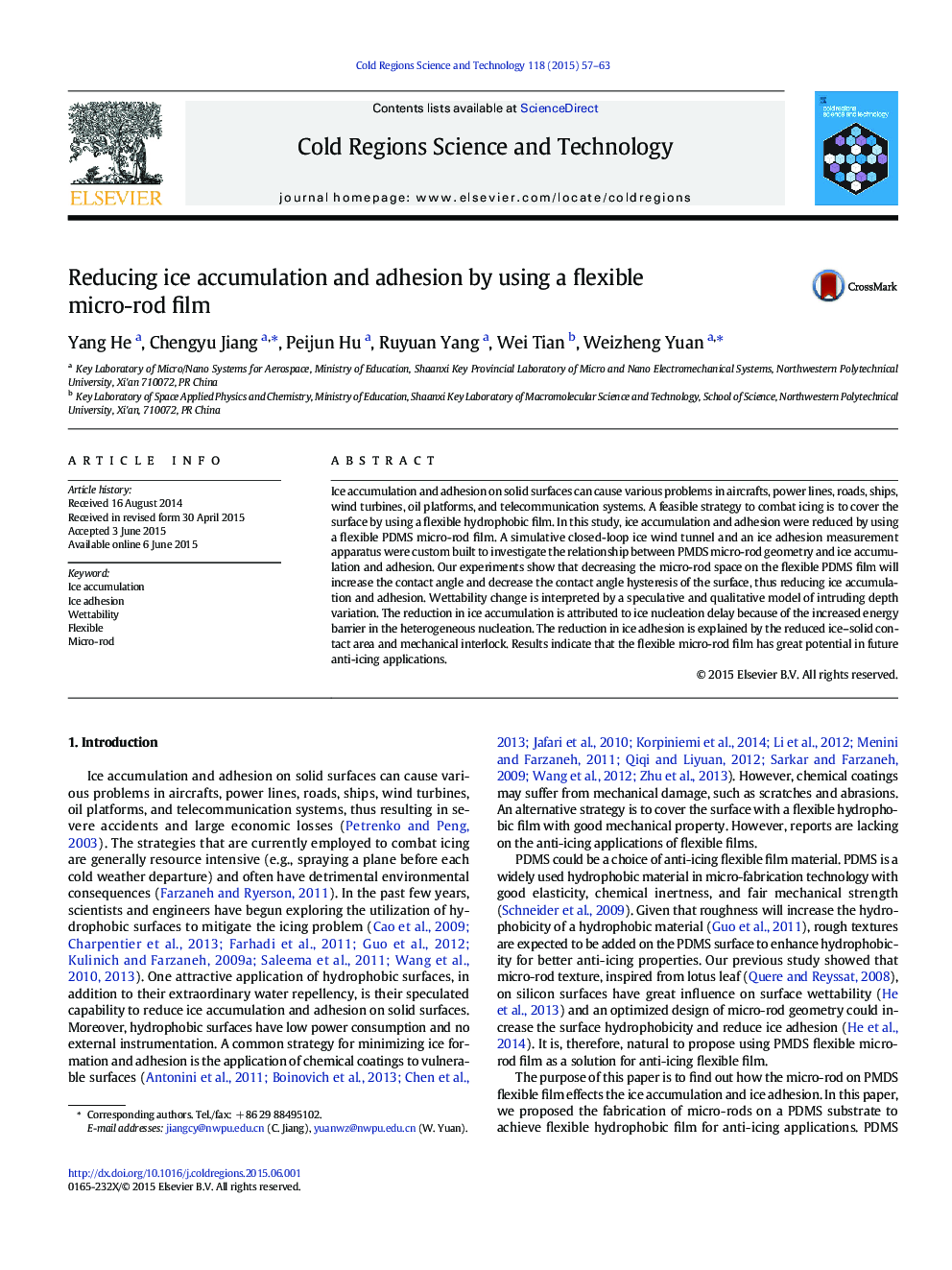| Article ID | Journal | Published Year | Pages | File Type |
|---|---|---|---|---|
| 6426773 | Cold Regions Science and Technology | 2015 | 7 Pages |
â¢Decreasing the flexible micro-rod space will reduce the ice accumulation and adhesion.â¢Wettability change due to micro-rod geometry is interpreted by intruding depth variation.â¢Ice accumulation reducing is attributed to ice nucleation delayâ¢Ice adhesion reducing is caused by reduced ice-solid contact area and mechanical interlock.
Ice accumulation and adhesion on solid surfaces can cause various problems in aircrafts, power lines, roads, ships, wind turbines, oil platforms, and telecommunication systems. A feasible strategy to combat icing is to cover the surface by using a flexible hydrophobic film. In this study, ice accumulation and adhesion were reduced by using a flexible PDMS micro-rod film. A simulative closed-loop ice wind tunnel and an ice adhesion measurement apparatus were custom built to investigate the relationship between PMDS micro-rod geometry and ice accumulation and adhesion. Our experiments show that decreasing the micro-rod space on the flexible PDMS film will increase the contact angle and decrease the contact angle hysteresis of the surface, thus reducing ice accumulation and adhesion. Wettability change is interpreted by a speculative and qualitative model of intruding depth variation. The reduction in ice accumulation is attributed to ice nucleation delay because of the increased energy barrier in the heterogeneous nucleation. The reduction in ice adhesion is explained by the reduced ice-solid contact area and mechanical interlock. Results indicate that the flexible micro-rod film has great potential in future anti-icing applications.
Graphical abstractDownload full-size image
